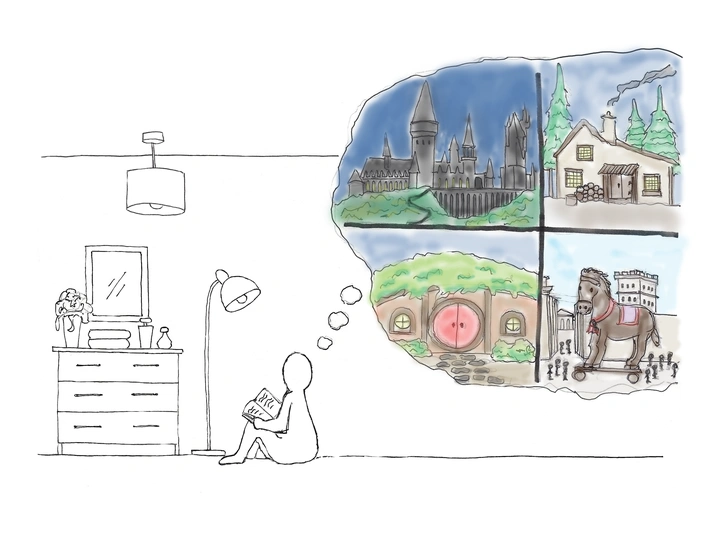Architecture of the Imagination

Rachel Jones (M. Arch, B.Sc. Arch) is a recent graduate from TU Dublin’s School of Architecture. There she completed Masters level research on the concept of ‘An Architecture of Care’ as a means of improving the social sustainability of existing apartment blocks in Berlin. She currently works as a Graduate Research Assistant in Henry J Lyons, where she is involved in the firm’s Sustainability Group and contributes to staff education and professional development through her work as a researcher.
The built environment is often used as a framing device in fictional works - it sets the backdrop, both literally and figuratively for the world (and beliefs) the author is trying to convey. Similarly, architects use the buildings they design to frame a proposed or idealised way of living, working, or enjoying leisure time in the public realm. What can an exploration of the architectural contexts of some of the most iconic fictional realms tell us about the ways in which people see themselves living, working, and relaxing? What types of spaces turn up again and again as those indicative of comfort and safety, and what common design themes demonstrate the opposite?
As the world focuses its attention on sustainability, people seem to forget that it’s a concept made up not just of one strand, but of three - social, economic, and environmental sustainability. While the latter is obviously vital in maintaining the health and liveability of our planet for current and future generations, it cannot exist without the support of the other two. This is where an analysis of fiction and storytelling comes in - they represent the beliefs and perceptions of the public at large, and are mediums present in all areas of society, albeit in differing forms. With their guidance, it’s possible to work towards designing spaces people want to use, thus increasing the social and economic sustainability of our work as designers. The use of fiction as a medium allows this idea to be explored in a creative and engaging manner which can be accessed by all, regardless of their level of architectural knowledge.